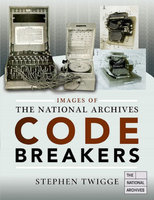New, Quality Gift Books - 50-90% off - over 2500 titles
Your basket is empty.
Categories Transport JOSEPH LOCKE: Civil Engineer and Railway Builder, 1805-1860
JOSEPH LOCKE: Civil Engineer and Railway Builder, 1805-1860
Book number: 95102
Product format: Hardback
In stock
Bibliophile price
£9.00
Published price
£25
Customers who bought this product also bought
|
|
NUTS & BOLTS: How Tiny Inventions Make Our World Work
Book number: 95280
Product format: Paperback
Bibliophile price
£5.50
Published price
£12.99
|
GLOUCESTER & SHARPNESS CANAL THROUGH TIME
Book number: 95370
Product format: Paperback
Bibliophile price
£5.50
Published price
£14.99
|
|
IMAGES OF THE NATIONAL ARCHIVES: Codebreakers
Book number: 95099
Product format: Paperback
Bibliophile price
£6.75
Published price
£14.99
|
MILKY WAY: An Autobiography of our Galaxy
Book number: 95111
Product format: Hardback
Bibliophile price
£7.00
Published price
£20
|
WONDERFUL THINGS 1: A History of Egypt Egyptology
Book number: 95145
Product format: Paperback
Bibliophile price
£5.50
Published price
£24.99
|
Browse these categories as well: Transport, Science & Maths, Historical Biography







